




Electric Kettles



Although the Great War took up nearly half of this decade, nonetheless electric kettle production moved forward in leaps and bounds.
Many different manufacturers used many different materials to produce a wide range of styles and qualities. However after the war ladies no longer held elegant tea parties, so the dividing line between “below stairs” kettles and parlour kettles became blurred.
A number of patents deal with fixing elements to the base of kettles in order that they could be removable in the event of failure. Kettles at this time cost as much as a ladies pair of shoes which themselves were only an aspirational dream as far as the ordinary labouring man or woman was concerned.
Standardisation is still in the future with each manufacturer having his own plugs or sockets and many came with several feet of flex reflecting the point that socket outlets were rare and far between.
Many people would have relied on proprietary adaptors which plugged into the light socket, as they would not have had any conventional sockets.

Whilst kettles from this decade are more readily available care must be taken not to confuse the different shapes with later 1930’s kettles.
Indicative of this time are very individualistic kettle connections, crude boil-
A chronology of the development of the electric kettle 1911 – 1920
25th January 1911 George & Herbert Collins (two directors of Premier Electric Heating Co.) apply for Patent for Thermal Cut out for use on electric kettles.
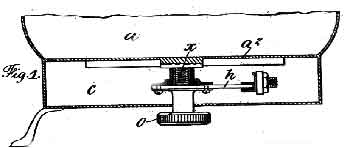 Patent No. GB191101900
Patent No. GB191101900
1911 GEC Ordinary kettle with hotplate attached
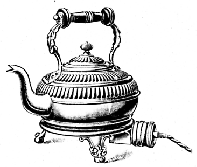 Watford Electrical Bulletin No. 4, pp19 c. February 1911 pp5
Watford Electrical Bulletin No. 4, pp19 c. February 1911 pp5
1911 Quartzalite heater & utensils.
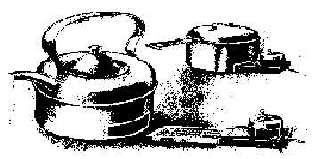 The Electrical Review Vol 68 January 6th 1911 pp 10
The Electrical Review Vol 68 January 6th 1911 pp 10
This system incorporated a porcelain base containing an element and switch which was slid into a slot in any of several different purpose made utensils.
1911 Siemens hot water jug

.jpg)
Watford Electrical Bulletin No 5, c April 1911 A very similar Siemens Jug kettle offered for sale on ebay.
1911 Siemens Electric Kettle on stand (very similar to the Prometheus kettle of 1906)
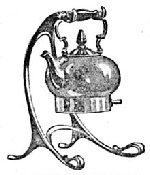 Watford Electrical Bulletin No 5, c April 1911
Watford Electrical Bulletin No 5, c April 1911
1911 Premier Electric Kettle sold for 12s 6d.
 Watford Electrical Bulletin No. 5, c April 1911
Watford Electrical Bulletin No. 5, c April 1911
1911 Section of Simplex Kettle element
 The Electrical Review Vol 68 April 7th 1911 pp 552
The Electrical Review Vol 68 April 7th 1911 pp 552
1911 Unidentified kettle used to illustrate front cover of WEB 6
 Watford Electrical Bulletin No. 6, cover c July 1911
Watford Electrical Bulletin No. 6, cover c July 1911
1911 Sunbeam Lamp Company 3 3/4pt Kettle
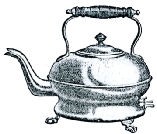 Watford Electrical Bulletin No. 6, pp19 c. July 1911
Watford Electrical Bulletin No. 6, pp19 c. July 1911
1911 GEC convertible iron & cooking outfit, made under the “Archer” patent, 21/-

Borough of Ilkeston Electricity Department advertising leaflet c. August 1911 pp12.
The Electrical Review Vol. 69 October 6th 1911 pp.560
1911 Verity’s kettle
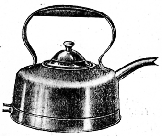 Borough of Ilkeston Electricity Department advertising leaflet c. August 1911 pp13.
Borough of Ilkeston Electricity Department advertising leaflet c. August 1911 pp13.
1911 B T-
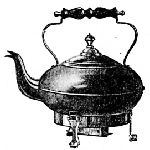
Borough of Ilkeston Electricity Department advertising leaflet c. August 1911 pp13.
The Electrical Review Vol. 69 September 29th 1911 pp.510
1911 Unidentified ornate jug kettle
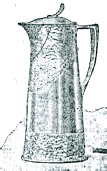 Borough of Ilkeston Electricity Department advertising leaflet c. August 1911 pp18
Borough of Ilkeston Electricity Department advertising leaflet c. August 1911 pp18
1911 Unidentified kettle group
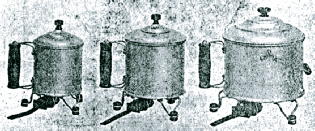
Borough of Ilkeston Electricity Department advertising leaflet c. August 1911 pp12.
1911 Unidentified Electric kettle
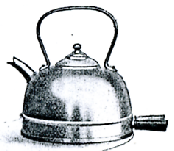 Watford Electrical Bulletin No. 7 c. October 1911 pp1
Watford Electrical Bulletin No. 7 c. October 1911 pp1
1911 “Therma” Kettle
 The Electrical Review vol 69 October 20th 1911
The Electrical Review vol 69 October 20th 1911
1911 The “Hotpoint Electric Heating Company was formed in the UK.
1911 Prometheus kettle (Note the square plug at rear.)
 Electric Wiring Fittings, Switches & Lamps Circuits.
Electric Wiring Fittings, Switches & Lamps Circuits.
W.Perren & Maycock pub.1911
1911 Simplex Combination cooking outfit. Sold complete for 24s 6d.
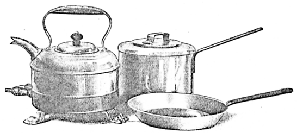 Watford Electrical Bulletin No.11; c. October 1911 pp1
Watford Electrical Bulletin No.11; c. October 1911 pp1
21st December 1911. Earnest Gustav Byng (Director & founder of GEC) & Charles Herbert Archer apply for patent on bolt under & readily removable and replaceable element. (Patent GB191228779)
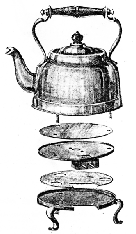 The Electrical Review Vol.71 27th September 1912 pp489
The Electrical Review Vol.71 27th September 1912 pp489
19th August 1912 George & Herbert Collins (two directors of Premier Electric Heating Co.), apply for patent to allow kettle base to be secured by same screws as element fixing screws.
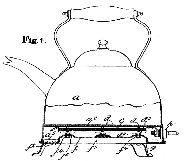 Patent GB191218911
Patent GB191218911
1912 GEC “Magnet” The Captain Kettle model H3616: 2pt 24/-
Element bolted underneath & readily replaceable.
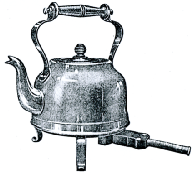 Watford Electrical Bulletin No.11; c. October 1912
Watford Electrical Bulletin No.11; c. October 1912
The Electrical Review vol71 September 27th 1912 pp489
1912 Premier cast-

The Electrical Review vol71 October 25th 1912 pp650
16th November 1912 Martin Albrecht of Germany applied for patent on a device in which a heating element, insulated with Mica, is enclosed in a thin metallic tube and then compressed to form a totally enclosed heating element.
1912 Belling fast boiling electric kettle
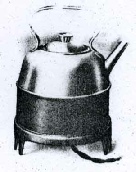 The Story of Belling 1912-
The Story of Belling 1912-
1912 Belling 2pt electric kettle, 7 mins. to boil. Price 18/-
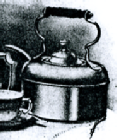 Belling catalogue 1912 (Leaflet number 5).
Belling catalogue 1912 (Leaflet number 5).
1912 Sun Electric kettle
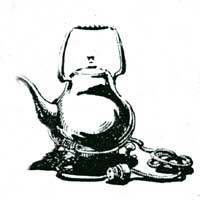 Electricity for Everybody. R. Borlase Matthews pub 1912
Electricity for Everybody. R. Borlase Matthews pub 1912
1913 Stoneware 1pt & 2pt Jug Kettle manufactured under Hosgoods Patents. A heating element is wrapped around the lower half of the vessel and protected with an insulated metal cover. Less than 10 minutes to boil 1pt. Manufactured by Edison & Swan United Electric Light Co.Ltd. from c1916. (The Electrical Review vol. 79; No 2016; pp35; July 14th 1916)
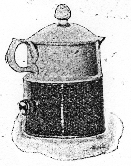 The Electrical Review vol.72 April 25th 1913 pp674
The Electrical Review vol.72 April 25th 1913 pp674
1913 Townshend Electric Coffee Maker
 The Electrical Review vol.73 September 19th 1913 pp456
The Electrical Review vol.73 September 19th 1913 pp456
1913 Dowsing Kettle
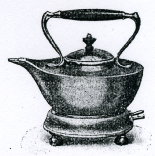 The Electrical Review vol.73 September 26th 1913 pp490
The Electrical Review vol.73 September 26th 1913 pp490
c. 1914 Dowsing electric kettle

The Museum of Science and Industry, Manchester. Web site
The Jackson Electric Stove Co. Ltd. Formed. To include the manufacture of kettles.(The Electrical Review September 24th 1920 pp389)
1914 Krupka & Jacoby imported kettle

The Electrical Review vol.74 June 2nd 1914 pp216
1914 Calor kettles
 The Electrical Review vol.72 March 27th 1914 pp529
The Electrical Review vol.72 March 27th 1914 pp529
1914 Soutterware “Indian” kettle. Made of brass or nickel plate. The unit is so arranged as to be entirely surrounded by water. The better class kettles are provided with two heats and boil 2pts in thirteen minutes.
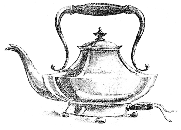 The Electrical Review vol.72 may 1st 1914 pp731
The Electrical Review vol.72 may 1st 1914 pp731
1914 At a meeting of the Point Fives (an organisation dedicated to reducing the price of electricity to 1/2d per unit), it was generally agreed that cookers should be supplied with a fast boiling electric kettle. Probably the reason why cooker controls to this day are supplied with a socket as standard.
The Electrical Review vol.74 May 8th 1914 pp805
1914 Credenda kettle showing method of retaining new corrugated Ni-
 The Electrical Review vol.75 November 27th 1914 pp726
The Electrical Review vol.75 November 27th 1914 pp726
1914 Eclipse kettle
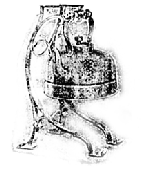 The Electrical Review vol.75 December 11th 1914 pp782
The Electrical Review vol.75 December 11th 1914 pp782
1915 The General Electric Co. (USA) develops a metal-
The Electrical Review vol.77 July 9th 1915 pp37
c1916 Ediswan Hosgood Boiling Mug & Food Warmer (see previous Stoneware mugs)
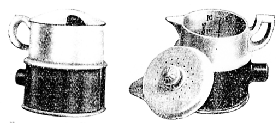 The Electrical Review vol.79. July 14th 1916 pp35
The Electrical Review vol.79. July 14th 1916 pp35
1917 Benham & Sons Ltd. apply for a licence to use Patent GB191226347 of 1912 granted to Martin Albrecht of Germany, describing a method of encasing an insulated resistance strip in a steel tube. Benham and Sons wished to adapt this invention by immersing the heater in a water container.
The Electrical Review vol.80 February 9th 1917 pp153
1919 Belling “Beehive” kettle remarkably similar to an AEG design of 1909
 The Electrical Review vol.85 October 3rd 1919 pp422
The Electrical Review vol.85 October 3rd 1919 pp422
1919 27th August. Allen Samuel Ford applied for patent for element surrounded by water jacket. Insert Picture
The element slips in between the two arms allowing water to be in close contact all around.
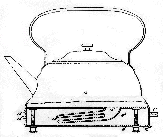 Patent No. GB138039
Patent No. GB138039
1920 The Hotpoint Electric Heating Co. set up an agreement with the American Company General Electric (GE) to create an agency in order to sell GE branded domestic appliances in the UK. This agency was called Hotpoint Electric Appliance Company Ltd. (HEAC)
http://www.hotpointservice.co.uk/Service/aboutus.html
1920 Universal “Aladdin” kettle shown in window display
Photograph is too poor to reproduce.
The Electrical Review June 25th 1920 pp813
1920 Yule 30-
No illustration
The Electrical Review September 3rd 1920 pp318
1920 Jackson Kettles
Photograph is too poor to reproduce.
The Electrical Review September 24th 1920 pp389
Many companies, at this time, as they still do today, made rivals kettles “under licence”. This explains apparently different manufacturers kettles looking identical. In the present case it is likely that the design is Prometheus as they used a very distinctive square plug mounted on the kettle.

